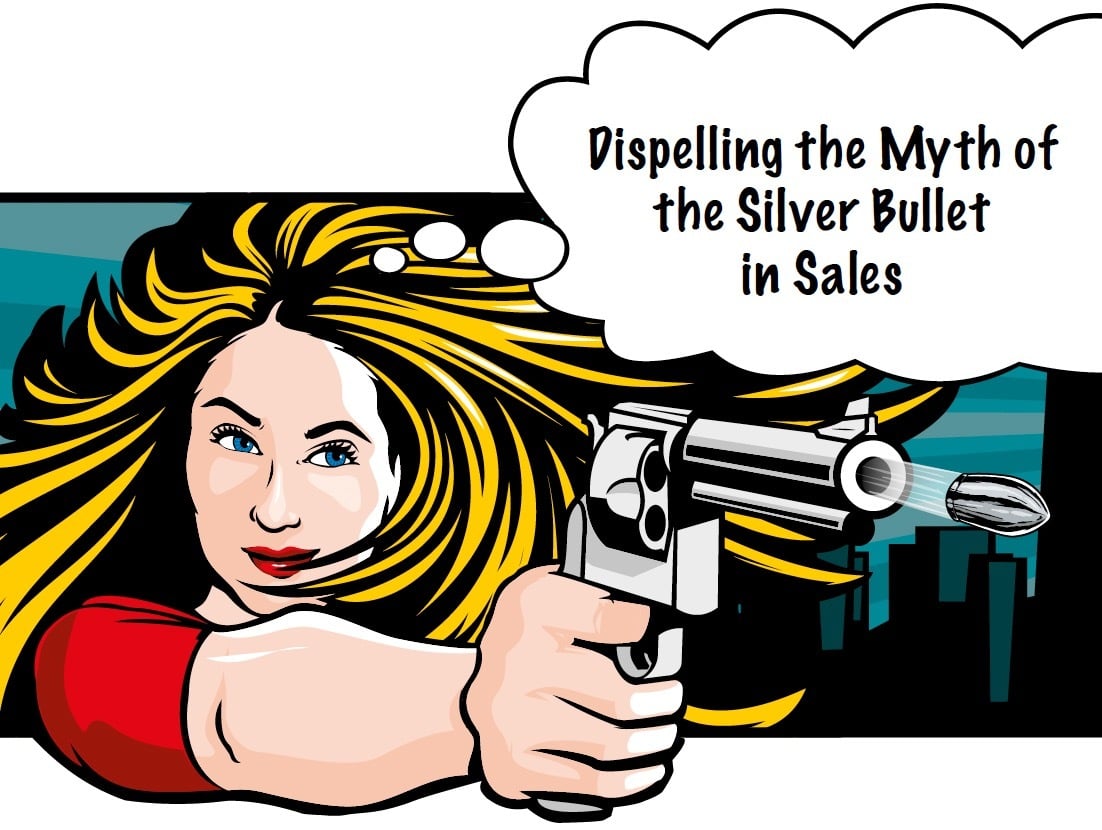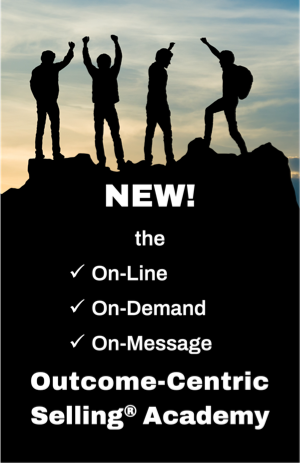Why the Future of B2B Selling Must Be Situationally Adaptive
October 1, 2025

 For decades, authors of books about selling have sought to promote the perfect methodology – the idea that there is “one best way” to sell. Whether SPIN, Challenger, Value Selling, Sandler, Miller-Heiman, MEDDPICC or many other approaches, each has claimed to provide the formula for sales success.
For decades, authors of books about selling have sought to promote the perfect methodology – the idea that there is “one best way” to sell. Whether SPIN, Challenger, Value Selling, Sandler, Miller-Heiman, MEDDPICC or many other approaches, each has claimed to provide the formula for sales success.
But in today’s increasingly complex B2B buying environment, the very idea of a "silver bullet" - a single, prescriptive approach - is looking more and more outdated and irrelevant.
In reality, today’s most effective sales leaders and their teams are already blending the most useful elements from their experience of multiple methodologies, adapting them to the specifics of their sales environment. The future of B2B selling is unlikely to be defined by the rise of a single new silver bullet, but by frameworks that are flexible, situationally aware, and capable of guiding salespeople through non-linear, often messy B2B buying decision journeys.
The Complexity of Modern B2B Buying
Gartner’s research on B2B buying behaviour has been widely quoted in sales circles for good reason. When it comes to significant, high value, complex buying decisions, their studies consistently show that:
- Buying groups tend to be large and diverse: A typical complex B2B purchase involves multiple stakeholders, each with different perspectives, priorities, and personal agendas
- Buying journeys tend to be non-linear: Gartner famously visualised the typical B2B buying process as resembling a bowl of spaghetti - with stakeholders looping back, re-evaluating, stalling or abandoning the journey altogether
- Customers struggle with their own process: A significant proportion of buying decision journeys end in “no decision,” not because of competition but because customers fail to achieve internal consensus
Perhaps it is no wonder that, as highlighted in “The Jolt Effect”, the prospective customer’s Fear of Messing Up [FOMU] - of making a decision that they later come to regret - is one of the factors that are frequently holding them back from making a commitment and placing an order.
In this environment, linear sales processes that assume a steady one-way, no-turning-back progression from discovery to close simply don’t reflect reality. Labelling a sales stage as “qualifying” as if it is an event rather than a continuous process makes no sense. A salesperson might make progress with one group of stakeholders, only to discover that another influential voice has introduced new requirements or objections.
Learning from the Failure of “One Best Way” Thinking
This problem is not new. In the early 20th century, Frederick Winslow Taylor pioneered “scientific management,” the idea that there was always “one best way” to perform a task. His methods initially transformed factory work but eventually failed when applied too broadly. Human beings proved too complex, and organisations too diverse, for a single prescriptive system to cover all circumstances.
B2B sales has gone through a similar evolution. Methodologies have emerged with the promise of being definitive, but each has eventually been recognised as partial. SPIN Selling revolutionised questioning, Challenger emphasised insight and teaching, MEDDPICC brought rigour to qualification. Yet none of these approaches – valuable though they are – are sufficient on their own to deal with the messy reality of modern B2B buying.
Just as Taylorism gave way to more adaptive approaches to management, sales must now move beyond the search for “one best way.”
Towards Situationally Adaptive Frameworks
What, then, replaces the dream of a universal methodology? The answer lies in situationally adaptive frameworks – flexible guidelines that help salespeople diagnose the customer’s circumstances and select the most relevant strategies, tactics, and behaviours.
These frameworks need to recognise that not all buying situations are equal. For example, they need to distinguish between:
- Inevitable vs discretionary purchases
- Familiar vs unfamiliar buying journeys
- Existing vs new customers
- New projects, expansions and renewals
They need to equip the salesperson to determine what phase of the buying decision journey the prospect is currently in, and which stakeholders are most significantly involved in the decision whether to advance to the next phase.
A salesperson who fails to diagnose these factors risks adopting the wrong approach: applying too much pressure when the customer is still learning, creating too little urgency when a deadline is looming, or communicating the wrong kind of value messaging for the stakeholders they are trying to persuade.
Equipping Salespeople to Think, Not Just to Follow
The critical role of a modern B2B sales framework is not to pre-emptively script every move, but to encourage critical thinking. The best frameworks are diagnostic in nature: they help salespeople ask the right questions about the customer’s situation, recognise relevant patterns, and select from a toolkit of proven strategies and tactics.
This requires a cultural shift for many organisations. Instead of enforcing rigid process compliance, sales leaders need to emphasise situational awareness, curiosity, and adaptability. Training should focus not on memorising a script but on critical thinking skills, understanding decision dynamics, building consensus, and navigating ambiguity.
In short: we need to equip our salespeople to think, and not just to follow.
The Role of AI in Enabling Situational Awareness
Artificial intelligence is already playing an increasingly important role in supporting this transformation. Properly applied, AI can:
- Accelerate research and discovery
- Enhance preparation for customer interactions
- Identify patterns of success and failure
- Recommend situationally appropriate tactics
- Assess deal health and the probability of winning
AI will not replace the human qualities of empathy, judgment, and influence that are so central to complex B2B selling. But it will increasingly act as a powerful enabler, guiding thoughtful salespeople towards situationally relevant actions while leaving room for human creativity.
Why There Is No Silver Bullet
Every generation of sales leaders has hoped that there might be a universal answer, a method that will work everywhere. The reality is that there is no silver bullet, and there never will be.
B2B selling is too context-dependent, too human, and too messy to be reduced to a single, linear process. What works brilliantly in one situation may fail in another. The future lies not in replacing one prescriptive methodology with another, but in creating adaptive frameworks that integrate the best of what we already know – and that evolve in response to a changing world.
Conclusion: We Need Adaptive Frameworks, Not Rigid Processes
As B2B sales leaders, our responsibility is to equip our teams to succeed in an environment that is non-linear, uncertain, and complex. That means moving beyond the outdated idea of “one best way” and embracing situationally adaptive frameworks that:
- Reflect the realities of an organisation’s sales environment
- Help diagnose each prospective customer’s circumstances
- Encourage flexible thinking and judgment
- Provide a toolkit of proven strategies and behaviours
- Harness AI to provide timely insight and guidance
- Help each customer to make their best possible decision
The sales organisations that thrive in the coming years will not be those that enforce rigid compliance with a single methodology. They will be those that recruit intelligent and thoughtful salespeople and empower them to adapt, to think, and to respond intelligently to the realities of each customer’s buying journey.
Because when it comes to B2B selling, there is – and never will be – “one best methodology.”
This article first appeared in the September 2025 edition of the International Journal of Sales Transformation.


Comments